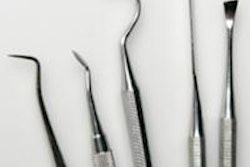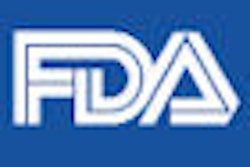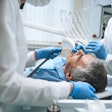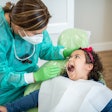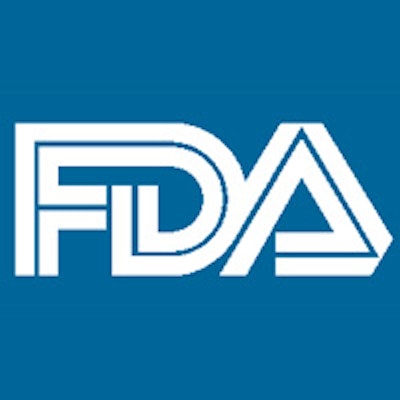
Dentists and hygienists are encouraged to report adverse drug and device reactions in the oral cavity of in their patients to improve the U.S. surveillance system and help protect patients' safety, according to a new study in the Journal of the American Dental Association (September 1, 2013, Vol. 144:9, pp. 1014-1021).
Americans spent $234.1 billion in 2008 for prescription drugs, according to the National Center for Health Statistics. In 2008, 48% of Americans used at least one prescribed medication in a typical month, 31% used two or three medications, and 11% used five or more, according to the U.S. Centers for Disease Control and Prevention.
Most medications have some associated adverse effects (AEs), averaging 70 adverse reactions, and taking multiple medications simultaneously increases the potential severity of adverse effects due to drug interaction, according to the study authors, from Columbia University, Tufts University, and private practice. Research has shown that 3.2% to 5.8% of all hospital admissions are the result of adverse drug reactions (American Journal of Health-System Pharmacy, June 1, 2001, Vol. 58:12, pp. 1126-1132; BMC Clinical Pharmacology, May 4, 2009, 9:8).
"AEs in the head and neck region often are seen first by dentists and, at times, seen only by dentists," they wrote. "As demographic trends and increased longevity lead to a sharp increase in the number of aging citizens, dentists must pay particular attention to the medications that their patients receive."
In addition to medications, devices and biomaterials commonly used by dental practitioners can pose a risk to patients, the study authors noted.
"Systemic product failures compromise the patient's well-being, often negatively affect the patient's perception of the dentist, and may even give rise to litigation," they cautioned.
More than 6,000 adverse effects reported
To examine the dentist's role in voluntary reporting of drug and device adverse effects and identify the most frequent adverse effects that occur in the oral cavity, the researchers reviewed the literature regarding MedWatch -- the U.S. Food and Drug Administration's (FDA) safety surveillance system for drugs and devices in the U.S. -- and mined data in the FDA's Adverse Event Reporting System (FAERS) for 2005-2010. They also examined the Manufacturer and User Facility Device Experience (MAUDE) database, which houses both mandatory and voluntary medical device reports submitted to the FDA.
The researchers found 6,436 adverse effects reports to the head and neck, representing 403 different conditions. Across 120 products, pharyngitis was reported among 107 medications (89.2%). Developing a cough was next, with a frequency of 105 of 120 (87.5%). Dysgeusia (abnormal or distorted taste) and dysphagia (difficulty swallowing) were the next most common adverse effects, both appearing in 99 of 120 (82.5%).
"When a patient complains of one of these ailments, it is important to recognize and consider the drugs he or she is using as a possible cause, even if the symptom is not listed as an AE commonly associated with the drug," the researchers wrote. "Taking this into greater consideration may allow a clinician to address a complaint while avoiding unnecessary tests that may be expensive or invasive."
The device-related adverse effects they found included osseointegration failure, fracture, overheating or malfunction of dental instruments such as high-speed handpieces, and fracture or detachment of components in dental needles.
Reporting adverse events
It is important for dentists, hygienists, and all healthcare professionals to participate in the national safety surveillance system, the researchers emphasized. In addition to adverse effects, practitioners should report quality or performance concerns such as suspected counterfeit, contamination, poor packaging, or defective components, the researchers noted. Adverse effects involving vaccines or investigational drugs have their own unique reporting procedures.
"When dentists share their clinical experience via voluntary reporting of AEs, this cumulative experience becomes powerful data that may help uncover unsafe and failed products," they wrote.
However, a systematic review of 37 studies across 12 countries -- including the U.S. --found that 94% of all adverse reactions were not reported, the researchers noted (Drug Safety, May 2006, Vol. 29:5, pp. 385-396).
Here are some of the most frequent factors associated with failure to report an adverse effect:
- Lack of knowledge about the system and the mechanics of the report
- Misconceptions about the types of conditions to be reported
- Diffidence, or the insecurity involved in reporting an event that is only suspected and does not have a clear causal relationship
- Indifference and the belief that one report would not contribute to medical knowledge
- Fear of litigation
To report an adverse effect, go to the MedWatch website and fill out the MedWatch voluntary reporting form (form 3500). The form can be submitted online or via fax. Reporting a suspected adverse effect takes less than 10 minutes, according to the study authors.
All reports are confidential; therefore, all reporters can submit forms without fear of HIPAA noncompliance or litigation, they added.
The adverse event reporting system was created to gather input from healthcare professionals after a product comes to market to help ensure the public's safety, the researchers emphasized.
"As pharmaceutical consumption increases exponentially for a growing segment of the population, and as dental technology and device innovation flourish, healthcare professionals have a distinct role in postmarketing patient safety," the study authors concluded. "MedWatch and FAERS allow healthcare professionals to report effects that they see while practicing, leading to expeditious detection of problems with drugs and defective devices."




